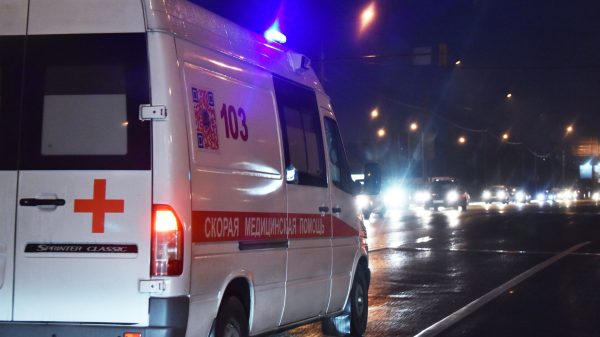With six conservative justices now sitting on the supreme court, the future of abortion access in US looks increasingly uncertain. But in addition to concerns about whether abortion clinics can stay open, activists are warning that lesser-known abortion medications are also under threat.
Medication abortions have been proven to be a safe and effective method of terminating pregnancy, and because they can be completed without doctor supervision, they serve as a crucial alternative for those who have had other abortion services shuttered in their state, or who do not feel safe accessing traditional health services.
The process of having a medication abortion typically involves taking two drugs, mifepristone and misoprostol, a few days apart. Taken together, the pills are 95% effective at terminating pregnancy before 10 weeks. Side-effects, like nausea and cramping, are often mild, and fewer than 0.4% of cases result in serious complications requiring hospitalization. Because of this, medication abortions can be largely “self-managed”, such that, even when doctors supervise patients taking the first pill, the patient can complete the procedure at home.
Understandably, some reproductive care providers have seen a spike in demand for the drugs in recent months: Aid Access, a private initiative from Dr Rebecca Gomperts which provides online consultations for US women seeking abortion pills, saw a 27% increase in requests during the first weeks of the pandemic, when abortion services were banned in Texas, according to a study published in July.
How egg freezing got rebranded as the ultimate act of self-care
Read more
While misoprostol is widely available in the United States as an ulcer medication, the FDA has succeeded in making mifepristone much more highly restricted. Despite its proven safety and efficacy, mifepristone has been reported to be more heavily restricted than certain opioids in the US. And because physicians commonly prescribe both pills together to terminate a pregnancy, by hindering access to only one pill, the FDA has made the process of seeking a medication abortion much more convoluted.
Despite all this, demand for the drugs has only grown: where only 5% of all abortions in the US were performed with the medications in 2001, that number had risen to 39% in 2017.
The fact that abortion pills are targeted by onerous restrictions over other drugs suggests to Sara Ainsworth, senior legal and policy director at If/When/How, that there is a political, not scientific motivation behind the FDA rules. “From the get-go, these drugs have been treated differently and shouldn’t be.”
Under current FDA guidelines, mifepristone can only be dispensed by a certified provider at a clinic or hospital. This policy, called the Risk Evaluation and Mitigation Strategy ( REMS), typically only applies to medications that require sensitive screening, like opioids.
Medication abortion has the potential to fill gaps in access, since it doesn’t require the facilities other procedures do
Kelly Blanchard, president of Ibis Reproductive Health
In May, the American College of Obstetricians and Gynecologists filed a lawsuit against the FDA arguing that the office-visit requirement represented an unnecessary burden to abortion access during the pandemic. Lower courts agreed, but the Trump administration fought for an emergency appeal. Earlier this month, the supreme court refused to hear the Trump administration’s argument – but notably, the decision does not prevent the court from hearing future arguments about telemedical access to abortion care, according to news analysis from NPR.
For now, the FDA’s restrictions have been lifted, but even so, the fight to restrict medication abortions continues at the state level: 18 states, including Alabama and Wisconsin, still have laws that make telemedical abortion illegal. Conservative lawmakers continue to pressure the FDA, with Senator Ted Cruz and a cohort of his colleagues recently asking the agency to classify mifepristone as “dangerous”.
“Medication abortion has the potential to fill gaps in abortion access, since it doesn’t require the facilities that other abortion procedures require,” says Kelly Blanchard, president of Ibis Reproductive Health, a non-profit research and advocacy center.
The US has a long history of making it difficult to access the abortion pills, which were first developed by the pharmaceutical company Rousell-Uclaf in France in the 1980s.
Met by the threat of boycotts by US pro-life groups, Rousell-Uclaf’s parent company promised not to market or distribute mifepristone outside the country. Nonetheless, George HW Bush’s administration placed mifepristone on the FDA’s import alert list, prohibiting anyone from bringing it into the country, even if only for personal use.
In 2005, Gomperts launched Women on Web to help pregnant women in countries were abortion is heavily criminalized access abortion pills. Initially, she , chose not to work with women in the US, but she changed her mind after years of receiving what she describes as increasingly desperate requests for help.
In 2018, Gomperts launched Aid Access, which connects pregnant people in the United States with Gomperts’ team of doctors and then to pharmacies in India that dispense mifepristone and misoprostol. In March 2019, she received a warning letter requesting that Aid Access “immediately cease causing the introduction of these violative drugs into US commerce”. Gomperts responded by filing suit against the FDA – and dozens of reproductive health advocates came to her aid, writing to the agency to challenge its policy.
Gomperts told the Guardian that she had seen a “surge of requests” from states where telemedicine – consulting with healthcare providers over the phone or the internet – is highly restricted. Her team saw a “significant increase” in requests from 11 states, the most from Texas where demand went up 94% between March and April.
For now, Aid Access is still operating in the US and still receiving thousands of requests each month. Although Gomperts dropped her suit against the FDA, she says she will file another one immediately if the FDA threatens Aid Access again.
“The REMS has been, it’s so unjust that it was there in the first place. It should never be there,” says Gomperts.
Advocates like Gomperts and Ainsworth say it is a racial justice issue; that there are people who may prefer self-managed abortions because they have faced discrimination for their gender or race in healthcare settings. “There are so many reasons why somebody might have a really difficult time accessing a clinic-based abortion even though it’s a constitutional right,” said Ainsworth.
Pro-abortion groups are preparing to mount an advocacy battle to protect abortion services of all kinds, regardless of which candidate wins the presidential race in November.
A coalition of more than 90 reproductive health organizations have drafted a blueprint of sexual and reproductive health priorities for the next presidential administration. At the top of the list: restoring federal funding for abortion (which is currently prohibited by the Hyde amendment), urging states to expand access to care, and reviewing the REMS.
In a statement, Blanchard told the Guardian she believed that the best way to advocate for self-manged abortions was by “documenting the safety and effectiveness of telemedicine.” Her team at Ibis is also studying the safety of self-managed abortions performed with no clinical supervision across the globe.
“Years of experience and rigorous research in the US and around the globe show mifepristone is safe and effective and there is no medical justification for the REMS,” said Blanchard.
Eliminating the REMS for abortion pills is just one step in creating greater access, but it is a crucial one. The ultimate goal, according to Blanchard, is “to improve access for all people, no matter who they are, where they live, or how much money they have”.





















































Свежие комментарии